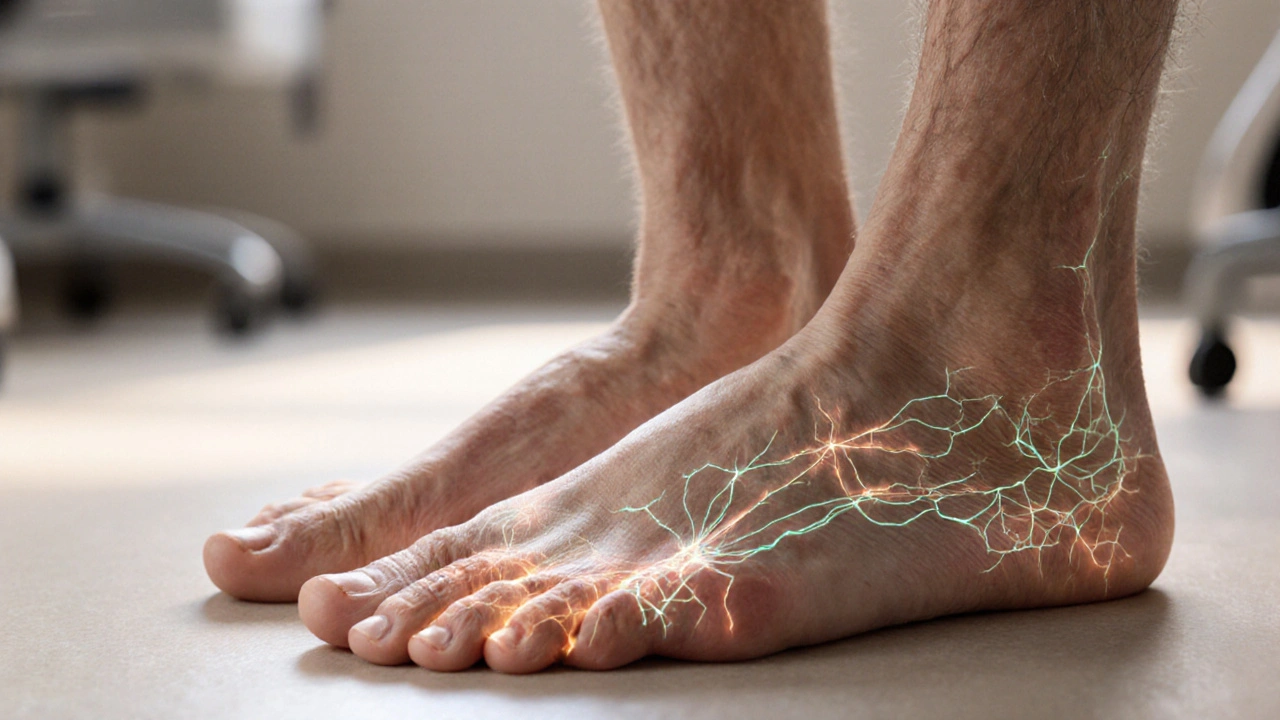Learn how diabetic peripheral neuropathy impairs balance, boosts fall risk, and what steps-like tight glucose control, targeted exercise, and orthotics-can keep you steady.
Diabetic Peripheral Neuropathy – What You Need to Know
When dealing with diabetic peripheral neuropathy, a common diabetes complication that causes nerve damage in the feet and hands. Also known as DPN, it often shows up as burning, tingling, or numbness and can lead to serious foot problems if left unchecked. Diabetic peripheral neuropathy isn’t just a foot issue; it’s a signal that your whole metabolic system needs tighter control.
One of the biggest drivers behind DPN is neuropathic pain, pain caused by damaged nerves rather than tissue injury. This type of pain can be relentless, making everyday tasks feel exhausting. Managing it often means pairing pain‑relief strategies with the core goal of blood glucose control, keeping blood sugar levels within a target range to prevent further nerve damage. When you keep glucose stable, you reduce the chemical stress on nerves, which can slow the progression of DPN.
Key Considerations for Managing DPN
First, think of DPN as a triangle of three interlinked factors: nerve health, glucose management, and medication choice. Each side influences the others. For example, if you’re using metformin, a first‑line oral drug that improves insulin sensitivity, you’re already addressing one leg of the triangle. Metformin helps lower blood sugar, which in turn lessens the metabolic attack on nerves.
Second, don’t overlook foot care. Regular inspection, proper footwear, and early treatment of any sores are practical steps that directly reduce the risk of infection—a common sequel of DPN. When you pair diligent foot checks with a disciplined glucose monitoring routine, you create a feedback loop that alerts you to problems before they become severe.
Third, pain management isn’t one‑size‑fits‑all. Options range from over‑the‑counter NSAIDs to prescription anti‑seizure medications like gabapentin. Each option has its own risk profile, so choosing the right one often depends on other health factors, such as kidney function or existing cardiovascular disease. This is why a conversation with your healthcare provider is essential; they can match a drug’s mechanism to your specific symptom pattern.
Finally, lifestyle tweaks matter. Regular low‑impact exercise—like walking or swimming—boosts circulation, delivering oxygen and nutrients to peripheral nerves. A balanced diet rich in B‑vitamins, omega‑3 fatty acids, and antioxidants supports nerve repair and reduces inflammation, complementing the pharmacologic approach.
Putting all these pieces together creates a roadmap: stabilize blood glucose, protect your feet, select appropriate pain medication, and adopt supportive habits. Below you’ll find a curated list of articles that dive deeper into each of these areas, from detailed medication comparisons to practical foot‑care checklists. Use these resources to build a personalized plan that tackles diabetic peripheral neuropathy from every angle.

